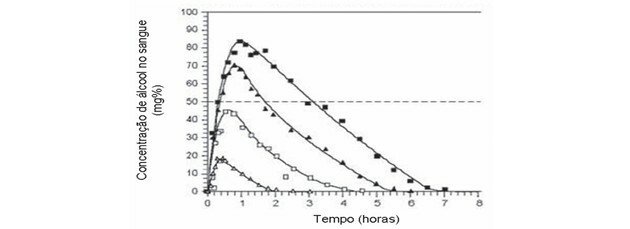The discipline of Portuguese Language is inserted in the knowledge area of Languages, Codes and their Technologies, whose test is carried out on the first day of Enem.
This area also includes Literature, Foreign Language (English or Spanish), Arts, Physical Education and Information and Communication Technologies, but Portuguese issues are the most numerous, representing about 60% of the test.
1. Text interpretation
Text interpretation is, without a doubt, the most frequent theme when speaking in Portuguese. The point is that interpretation cuts across all disciplines and interpreting texts will be a task you will need to use in any of them.
Our tip is to practice. But, after all, how can I practice interpreting text? Reading?
Reading should be a daily habit, but just reading is not enough, the most important thing is to assume a posture critical and not read automatically, but with attention to the message being transmitted and its occupation.
We are sure these articles can help you.:
- Text Interpretation: 7 Foolproof Tips
- Text Interpretation Exercises with Template
text interpretation exercise
1. (Enem/2018) In sociology and literature, Brazilians were sometimes treated as cordial and hospitable, but this is not what happens in social networks: the racial democracy touted by Gilberto Freyre bypasses what happens daily in the country's virtual communities. Unprecedented survey carried out by the project communicate that changes [...] shows in numbers the intolerance of the Tupiniquim internet user. Between April and June, an algorithm searched platforms [...] for messages and texts on sensitive topics, such as racism, political positioning and homophobia. A total of 393,284 mentions were identified, 84% of them with a negative approach, exposure of prejudice and discrimination.
Available in: https://oglobo.globo.com. Accessed on: Dec 6th. 2017 (adapted).
By addressing the posture of the Brazilian Internet user mapped through a survey on virtual platforms, the text
a) minimizes the reach of digital communication.
b) refutes preconceived ideas about Brazilians.
c) relativizes responsibilities on the notion of respect.
d) exemplifies concepts contained in literature and sociology.
d) exposes the ineffectiveness of studies to change such behavior.
Correct alternative: b) refutes preconceived ideas about Brazilians.
The text addresses the cordial and hospitable attitude for which the Brazilian people are known. However, according to the research carried out by the project mentioned above, this is not the attitude that Brazilians they assume on social networks, in whose messages there is a lot of prejudice and intolerance, that is, just the opposite.
The remaining alternatives are wrong because:
a) At no time does the text reduce (minimize) the reach of digital communication. On the contrary, there are thousands of mentions.
c) The text does not devalue the importance of moral precepts, but rather shows the concern with the percentage of negative approach found in social networks.
d) The text does not present examples of concepts, but deals with a social problem.
e) The message in the text presents data from a survey. This shows that the intention is informative (referential function) and not persuasive (appealing function).
2. linguistic variation
Linguistic variation involves geographic space (regionalisms), historical time (current Portuguese), social classes (sociolects), formal and informal situations (slang). This makes our language reinvented every day.
It is necessary to be aware of these types of variations because they are usually charged in Enem, reaffirming the very current posture in the contents present in the exam.
Be sure to read the articles we've prepared for you.:
- linguistic variations
- linguistic prejudice
linguistic variation exercise
2. (Enem/2018)

The use of certain linguistic varieties in educational campaigns has the function of reaching the target audience more directly and effectively. In the case of this text, this strategy is identified by (a)
a) formal speech of the Portuguese language.
b) standard record of the written language.
c) lexical selection restricted to the sphere of medicine.
d) fidelity to the jargon of advertising language.
e) use of linguistic marks typical of orality.
Correct alternative: e) use of linguistic marks typical of orality.
The Ministry of Health's campaign was marked by colloquial (or informal) language, characteristics of orality, which can be highlighted, for example, by the use of the word "drop" and by the way the message looks like a conversation with the message recipient "is hard to let go?".
As for the remaining alternatives:
a) As explained above, the speech used is informal.
b) The message is presented as a conversation, that is, spoken language, not written language, as mentioned above.
c) Vocabulary from the medical field was not used, precisely to facilitate the transmission of the message and reached as many people as possible.
d) There is also no evidence of the use of jargon - words restricted to a certain group, for the same reason explained in the previous alternative.
3. Textual genres
Be aware, because the questions on Enem usually bring different types of textual genres to support a content and ask something about them.
There are many textual genres and Toda Matéria has a large list with various contents, such as chronicle, news, review, interview, e-mail.
If you want to be an ace in this subject, read:
- Textual genres
- Types of Texts
Exercise of textual genres
3. (Enem/2018) Liesel Meminger's trajectory is told by a morbid, surprisingly sympathetic narrator. Upon realizing that the little book thief escapes him, Death becomes fond of the girl and traces her footprints from 1939 to 1943. Traces of a survivor: the communist mother, persecuted by Nazism, sends Liesel and her brother to the poor suburb of a German city, where a couple is willing to adopt them for money. The boy dies on the way and is buried by a gravedigger who drops a book in the snow. It's the first in a series the girl will snatch over the years. The only link with her family is this work, which she still cannot read.
The life around is the pseudo-reality created around the cult of Hitler in World War II. She watches the Führer's euphoric birthday celebration from the neighborhood. Death, perplexed by human violence, gives a light and amusing tone to the narrative of this tough confrontation between the lost childhood and the cruelty of the adult world, an absolute – and rare – success of criticism and public.
Available at: www.odevoradordelivros.com. Accessed on: June 24 2014.
Textual genres can be characterized, among other factors, by their objectives. This fragment is a (a)
a) report, as it seeks to convince the interlocutor of the thesis defended throughout the text.
b) summary, as it promotes the reader's quick contact with unknown information.
c) synopsis, as it synthesizes the relevant information of a work in an impersonal way.
d) instruction, as it teaches something through explanations about a specific work.
e) review, as it presents an intellectual production in a critical way.
Correct alternative: e) review, as it presents an intellectual production in a critical way.
In addition to being informative, the text above contains the opinion of its author. This is what we can see, respectively, in the following excerpts:
"Liesel Meminger's trajectory is told by a morbid, surprisingly sympathetic narrator."
"gives a light and fun tone to the narrative of this harsh confrontation between lost childhood and the cruelty of the adult world, an absolute – and rare – success for critics and audiences."
The remaining alternatives can be excluded because:
a) report: its purpose is to inform the reader about an event, such as a news published in a newspaper. He adds that reporting is a non-literary genre.
b) abstract: abstracts can be indicative, informative or critical. The review is a critical summary, but as there is an alternative to the review, it is excluded.
c) synopsis: the synopsis does not contain the opinions of the person who writes them. It is a kind of summary that presents the main points of a text.
d) instruction: an instruction clarifies or explains something.
See too: Writing themes for Enem
4. Intertextuality
Intertextuality is the use of known texts in the creation of new texts.
Like text interpretation, intertextuality is another content that cuts across several disciplines. Therefore, practicing is the way to do well in this regard.
We are sure these articles can help you.:
- Intertextuality
- Types of intertextuality
- Parody and paraphrase
Intertextuality exercise
4. (Enem/2018) In this text, we seek to convince the reader to change their behavior through the association of verbs in the imperative mode to the

a) indication of several service channels.
b) dissemination of the Women's Defense Center.
c) information about the duration of the campaign.
d) presentation of the various supporters.
e) use of the image of the three women.
Correct alternative: e) using the image of the three women.
The campaign presents intertextuality as women imitate the well-known image of the three little monkeys.
The imperative verbs try to convince the reader to a type of action "break the silence", "report", "turn on", "don't silence", precisely contrary to the attitudes presented by women, that is, pretending not to see or hear and shut up.
The remaining alternatives can be excluded because the imperative verbs:
a) do not indicate the service channels.
b) does not aim to publicize the Center.
c) do not inform the duration of the campaign.
d) do not present supporters.
5. speech figures
Speech figures give more emphasis to the message. Metaphor, which is a word picture, is the best known of them, but its types are many.
To be ready to identify this stylistic feature in any text on Enem, review the content we've prepared for you:
- speech figures
- Figures of Speech Exercises
Figures of Speech Exercise
5. (Enem/2018)
10/20
It is necessary not to drink anymore. You don't have to feel like drinking and not drinking: you don't have to feel like drinking. It is necessary not to feed the vultures. It is necessary to close for balance and reopen. It is necessary not to feed the vultures. No hope for the vultures. You have to shake off the dust. You need to be able to drink without offering yourself as a burnt offering. It's needed. It is necessary not to die for the time being. You have to survive to check. No longer thinking about Rogério's loneliness and leaving him. It is necessary not to feed the vultures. It is necessary while there is still time not to die on public roads.
TORQUATO GRANDSON. In: MENDONÇA, J. (Org.) Brazilian (im)popular poetry. São Bernardo do Campo: Lamparina Luminosa, 2012.
The text construction process formats a message scaled by it, since
a) configures the narrowing of poetic language.
b) reflects the gaps in lucidity in deconstruction.
c) projects the persistence of repressed emotions.
d) reverberates the awareness of the anticipated agony.
e) reveals the fragmentation of human relationships.
Correct alternative: d) reverberates awareness of anticipated agony.
The regular repetition of the phrase "it is necessary", characteristic of the anaphora figure of speech, reinforces the idea of the agony experienced by the poetic self before death.
As for the remaining alternatives:
a) Figures of speech are stylistic resources very present in this type of language, which is characterized precisely by this breadth of style and not its narrowing.
b) The way the text was prepared reflects the agony of a lucid person, who is aware of what he needs.
c) The construction of the text, marked mainly by repetition, intensifies the agony more than any intention of persistence of the poetic self.
d) The fragmentation of human relations is not the theme of this text. As mentioned, the main theme is agony.
6. language functions
Language functions vary depending on the speaker's intent. They can be referential, emotive, poetic, factual, conative and metalinguistic.
Don't confuse functions with figures of speech and don't stop there. We have the right articles to help you in this endeavor:
- language functions
- Commented exercises on language functions
Exercise of language functions
6. (Enem/2018) Visually impaired people can now go to some movie theaters and theaters to enjoy, in greater intensity, the attractions on display. Who helps with the task is the Whatscine application, which has just arrived in Brazil and is available for the iOS (Apple) or Android (Google) operating systems. When being connected to the network wifi of cinemas and theaters, the app synchronizes an audio that describes what is happening on the screen or on stage with the show in progress: the user can then listen to the narration on their cell phone.
The program was developed by researchers at the Carlos III University in Madrid. “In Spain, 200 movie theaters already offer the feature and films from major studios are already shown using Whatscine!” says Brazilian Luis Mauch, who brought the technology to the country. “In Brazil, we have already signed a partnership with São Paulo Companhia de Dança to adapt their shows! This is already an advance. Do you agree?”
Available in: http://veja.abril.com.br. Accessed on: Jun. 25, 2014 (adapted).
Because it is multiple and presents peculiarities according to the sender's intention, the language has different functions. In this fragment, the referential function of language predominates, because there are elements that
a) seek to convince the reader, encouraging the use of the application.
b) define the application, revealing the author's point of view.
c) show subjectivity, exploring emotional intonation.
d) expose data about the application, using denotative language.
e) aim to maintain a dialogue with the reader, resorting to a question.
Correct alternative: d) expose data about the application, using denotative language.
The referential function is also called denotative function precisely because the purpose of its message is to inform, for that, making use of the proper meaning of the words (denotation).
As for the remaining alternatives:
a) The text has no intention of convincing the reader, such as verbs in the imperative or the use of vocative, marks of the conative or appellative function.
b) The text does not present the author's point of view, only data exposure.
c) The text does not convey the emotion of its author (emotional or expressive function), only exposition of data, as mentioned in previous points.
e) There are no dialogs throughout the text (phatic function). There is only one question that closes it, which is why it is not the most striking feature in the language that was used. We know that a message can contain several types of language, but there is always one that is predominant, in this case, the referential function.
Study Tips
To organize the study routine ahead, it is best to follow a study plan.
As you read the material we've prepared for you, don't trust your memory and make summaries in the way that works best for you - tokens, mind maps or other types of schema.
And, as we've talked about, practicing is the best step to follow. In order not to be surprised on the day of the exam, take the previous exams and understand the model used.
On the day of the exam, you won't have a lot of time to re-read the questions, so concentrate and make a read carefully and make sure you spend time on one that will leave you with more doubts and that you think more difficult.
There are easy, medium and hard questions and they are arranged randomly. So, when you read, start marking the most important points in the underline, this will save you a lot of time.
Don't stop there. Have more articles very useful for you:
- Subjects that most fall in Enem
- Enem Portuguese questions commented by an expert
- Enem: everything you need to know
- Languages, Codes and Their Technologies
- Enem Writing: tips to make the best writing
- Quotes from philosophers to help with the writing of the Enem


